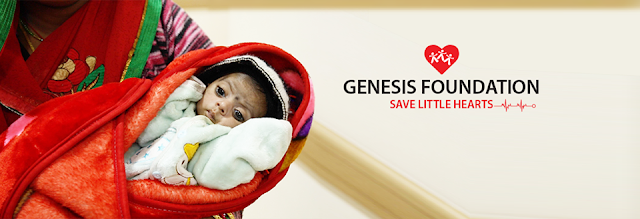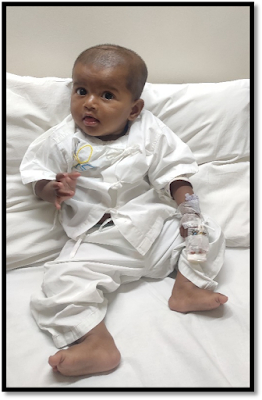 |
| Save Little Hearts, Genesis Foundation |
A congenital heart defect is a problem found in the heart's structure when a baby is born. Heart defects can range from mild to severe. It can be frightening for parents to find out that their child has a congenital heart defect. However, congenital disease has become relatively common, affecting almost 1 in every 100 newborns. Advanced medical science and diagnostic research provides very detailed information regarding structural heart abnormalities.
At least 8 out of every 1,000 infants born each year are detected with a heart defect.
Common Heart Defects
Some common types of congenital heart defects, that can affect any part of the heart or its surrounding structures, are mentioned below:
- Aortic Stenosis: Aortic stenosis is one of the most common and most serious valve disease problems. Aortic stenosis leads to narrowing of the aortic valve opening. It restricts the blood flow from the left ventricle to the aorta. It also affects the pressure in the left atrium.
- Atrial Septal Defect (ASD): ASD means there is a hole in the wall that separates the top two chambers of the heart. This defect allows oxygen-rich blood to leak into the oxygen-poor blood chambers in the heart. ASD is a defect in the septum, i.e the wall that separates the heart's left and right side, between the heart's two upper chambers (atria).
- Coarctation of the Aorta (COA): Coarctation of the aorta (CoA) is a relatively common defect that accounts for 5-8% of all congenital heart defects. Coarctation of the aorta may occur as an isolated defect or in association with various other lesions. It is also called aortic narrowing, and is a congenital condition whereby the aorta becomes narrow,
- Patent Ductus Arteriosus (PDA): PDA is an unclosed hole in the aorta. Before a baby is born, the fetus's blood does not need to go to the lungs to get oxygenated. When the baby is born, the blood must receive oxygen in the lungs and this hole is supposed to close. If the hole is still open, the blood may skip this necessary step of circulation. The open hole is called the patent ductus arteriosus.
- Tetralogy of Fallot (TOF): It is a a heart defect that features four problems including a hole between the lower chambers of the heart, an obstruction from the heart to the lungs, the aorta crosses over the hole in the lower chambers, the muscle surrounding the lower right chamber becomes heavily thickened.
- Total Anomalous Pulmonary Venous Connection/Return (TAPVC or TAPVR): It is a rare congenital disease in which all four pulmonary veins fail to connect normally to the left atrium. Rather the veins drain abnormally to the right atrium through an abnormal connection.
- Truncus Arteriosus: It is a rare type of heart disease, present at child birth, in which a single blood vessel comes out of the right and left ventricles, instead of the pulmonary artery and aorta vessels.
- Ventricular Septal Defect (VSD): VSD is a hole in the wall separating the two lower chambers of the heart. In normal situations, the wall between the chambers closes before the fetus is born, such that during birth, oxygen-rich blood is kept away from mixing with the oxygen-poor blood. When the hole does not close, it may cause higher pressure in the heart or reduced oxygen to the body.
Although availability of medical resources do not guarantee a normal life for a child suffering from a congenital heart disease, by working with the health care team, and participating in programs such as
Save Little Hearts , one can get the best care possible for your child.





Comments
Post a Comment